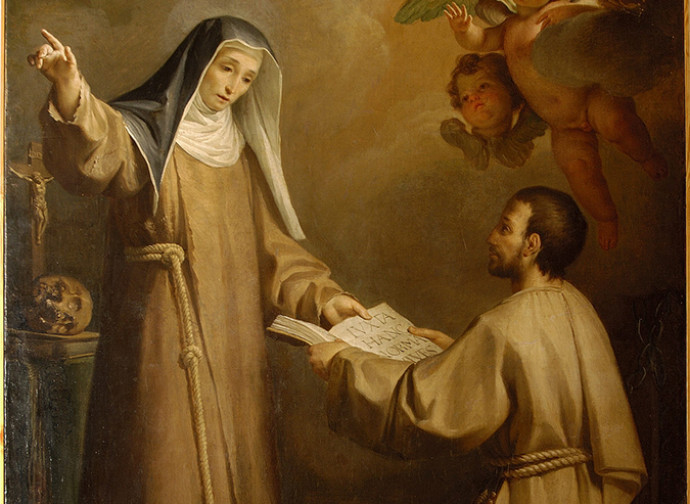Saint Hyacintha Marescotti
The youth of Saint Hyacintha Marescotti (1585-1640), was not what she would have preferred. She became a Franciscan tertiary without a vocation and while still upset from disappointed love.

The youth of Saint Hyacintha Marescotti (1585-1640), was not what she would have preferred. She became a Franciscan tertiary without a vocation and while still upset from disappointed love. She lived for a long time ignoring her solemn vows, but eventually had a change of heart and took refuge in the comfort of God. Clarice (her secular name) came from a noble family, her parents being Count Marcantonio and Ottavia Orsini. When she was 9 years old, they decided to have her educated in the convent of San Bernardino, Viterbo, which their first-born Ginevra had just entered. Unlike her sister, who was moved by an authentic vocation, Clarice showed impatience for the religious environment and, after two years, was taken back to her native Vignanello. Introduced with her younger sister Ortensia to the houses of the high nobility, the future Saint fell in love with a marquis and intended to get married, but her father preferred to marry off the other daughter, perhaps because she was the one the rich marquis seemed to prefer.
Deeply afflicted, the young Clarice entered the convent of San Bernardino where, in January 1604, she took the habit and the name of Hyacintha. Having told her father that she had only done it to hide her humiliation, Hyacintha did not abandon the comforts she was accustomed to: she had her own kitchen, fine foods and furniture; she dressed in a silk tunic and took an interest in "many vanities and nonsense", as she herself would later write in her diary. This was her lifestyle for about 10 years, until a serious illness, as well as her confessor's frank admonition, opened her eyes to the need to abandon that scandalous behaviour. In the refectory she publicly apologised to her sisters for having transgressed the rule and offended God; in the meantime, she had prayed thus: "O God, I beg you, give meaning to my life, give me hope, give me salvation!"
Since then, and until her death, the Saint, who had now changed her name to Hyacintha of the Virgin Mary, devoted her life to prayers, night vigils, frequent fasting on bread and water, corporal mortifications, while continually meditating on the Passion of Christ, of whom she said: "Jesus, my love, has been crucified". She had the practice of the Quarantore [40 hours of prayer] introduced to Viterbo for the adoration of the Blessed Sacrament after the Carnival days, and became the novices' teacher, while God endowed her with a number of mystical gifts: discerning hearts, ecstasies, prophecies.
Her asceticism was accompanied by a commitment to the needy, carried out through two confraternities: the Sacconi, led by a friend whom she had converted, and so called because its members wore sackcloth while assisting the sick, the poor and prisoners; and the Oblates of Mary, dedicated to the care of the elderly. Hyacintha died in odour of sanctity: this prompted the inhabitants of Viterbo to snip pieces off her habit to keep as relics, because they knew her total donation to the Lord, who had filled her with unimaginable joy.




